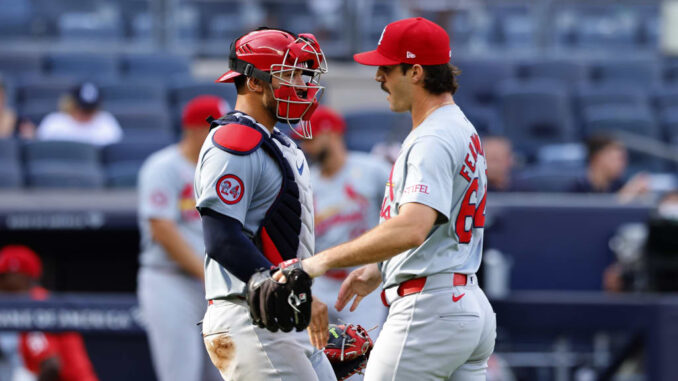
The St. Louis Cardinals have had a rough start to the season, and fan frustration is quickly turning into anger directed at the entire organization. Although it was made clear before the season began that this would be a transitional year, it’s still difficult to watch a Cardinals team struggle to compete so early.
Despite bringing back most of the roster from last year’s 83-win team, they were counting on significant improvement from key players and consistent performances from others.
Currently, the Cardinals sit in fourth place in the NL Central with a 2-11 record on the road. At least four of those road losses can be directly blamed on bullpen failures, while others are due to a mix of poor clutch hitting or one disastrous inning.
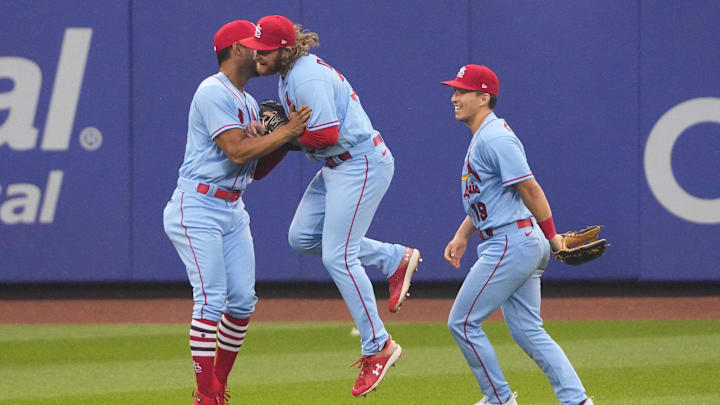
Regardless, the opening series sweep over the Twins feels like a distant memory, and the team is beginning to resemble the mediocre, .500-level club many expected. If you’re looking to place blame on manager Oli Marmol, you won’t find it here — I believe he’s doing the best he can with the roster the front office provided, and his recent remarks about the bullpen should reinforce that point for fans.
These players have to hold some blame for the Cardinals struggles to start the season
Alec Burleson
Entering the season, it made sense for Alec Burleson to get the first opportunity to establish himself as the Cardinals’ primary designated hitter — or at least the strong-side platoon DH — while also serving as a backup option at first base.
Although his outfield defense had improved, it remained below average and unnecessary given the Cardinals’ stronger defensive outfielders like Lars Nootbaar, Victor Scott II, Michael Siani, and a developing Jordan Walker (more on him later, unfortunately).
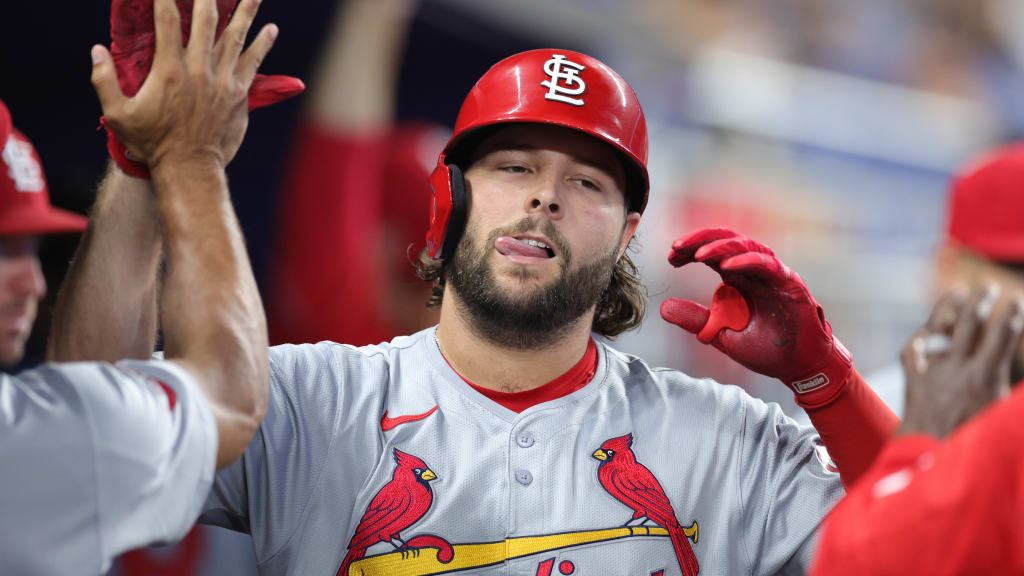
In 2024, Burleson proved to be a solid big league hitter, batting .269 with 21 home runs and a team-best 78 RBIs. His 106 wRC+ placed him slightly above league average offensively. Always seen as a bat-first player, there was hope that his power would evolve into a bigger asset — something he hinted at with a .331 average and 20 home runs in Triple-A Memphis in 2022. However, since reaching the majors, his home run production has largely stalled.
Since becoming a full-time contributor in 2023, Burleson has hit 29 home runs and 43 doubles across 938 at-bats, producing a .704 OPS — about average or a bit below by MLB standards. He consistently puts the ball in play and covers the plate well, but his swing decisions often hold him back. While his strikeout rate is among the best in the league, he rarely walks and chases pitches far too often.
As a result, even though he makes frequent contact, it tends to be weak, reflected in his poor rankings in expected slugging, barrel rate, and a hard-hit rate that only beats about 22% of hitters league-wide. These numbers are far from ideal, especially for a designated hitter who has almost exclusively batted fifth this year.
Burleson’s struggles are even more pronounced with runners in scoring position, where he sees plenty of chances given his spot in the lineup.

Despite having the fourth-most at-bats in those situations, he’s only driven in six runs — fewer than players like Pedro Pages (10 RBIs), Ivan Herrera (8), and Thomas Saggese (7), all of whom have had significantly fewer opportunities. His .649 OPS with runners in scoring position ranks ninth on the team.
To remain a viable major league hitter, Burleson will need to adjust his approach, possibly even selling out more for extra-base hits. So far in 2025, he’s hitting a respectable .276, but with just three extra-base hits (all doubles) and a .645 OPS, he isn’t providing the kind of impact expected from a designated hitter. Because of these struggles, I’ve started to consider whether players like Saggese or Luken Baker should be seeing more at-bats in that role — even against right-handed pitching.
Ryan Fernandez
As highlighted in the article’s introduction, some of the blame for the Cardinals’ late-game struggles falls on their bullpen. Through their first 25 games, St. Louis’ relievers have posted a combined 2-8 record with a 4.94 ERA. If you remove the only three effective arms—Maton, Helsley, and Leahy—that record worsens to 2-7 with a dreadful 6.67 ERA. A key contributor to those struggles has been Ryan Fernandez, who is currently 0-2 with an 11.42 ERA in 2025.

Fernandez, a Rule 5 draft pick last year, was a valuable piece of the bullpen in 2024, finishing with a 3.51 ERA and 71 strikeouts across 66.2 innings. His performance, along with solid underlying metrics, led many to believe he had a long-term role with the Cardinals, possibly even stepping into Andrew Kittredge’s spot late in games.
That seemed to be the team’s plan too, although Fernandez showed some signs of trouble during Spring Training. Despite maintaining decent strikeout numbers in 8.2 innings, control issues cropped up and followed him into the regular season.
After a scoreless outing to open the year, Fernandez allowed runs in four consecutive appearances, giving up three runs in two of those. A brief stretch of three scoreless outings without any walks offered hope he was turning things around, but that quickly unraveled.
Over his next 1.2 innings, he surrendered five earned runs, a stretch exacerbated by a bullpen that was already stretched thin. His roughest appearance came in New York, where he was tasked with protecting a one-run deficit but gave up three runs on three hits and a walk in a single inning.

Fernandez was given another opportunity in Atlanta to hold a tie, but a hanging slider to Eli White resulted in a crushing three-run homer, sealing another series loss. Once one of his best pitches, Fernandez’s slider has dramatically regressed; this year, opponents are hitting .500 against it, slugging .950 with multiple extra-base hits. Last season, hitters managed just a .192 average and a .295 slugging percentage against the same pitch.
A demotion to Triple-A should give Fernandez a chance to refine his slider and rebuild confidence, but his replacement doesn’t inspire much optimism either. As manager Oli Marmol pointed out, the front office failed to stock the organization with meaningful depth.
Riley O’Brien was called up following Fernandez’s demotion and, after a strong start to his season, will likely be eased into low-leverage situations as the Cardinals hope he can provide some stability.
Jordan Walker
Outfielder Jordan Walker was expected to be a key figure in the Cardinals’ 2025 transition year, with the team counting on him to finally live up to his top prospect billing after parts of two seasons in the majors.
Though his Spring Training numbers weren’t eye-catching, his approach showed clear improvements, particularly in laying off breaking balls away. He did miss about a week of action after stepping on a stray sprinkler head, costing him roughly 15-20 at-bats — more reps the team would have preferred he had.
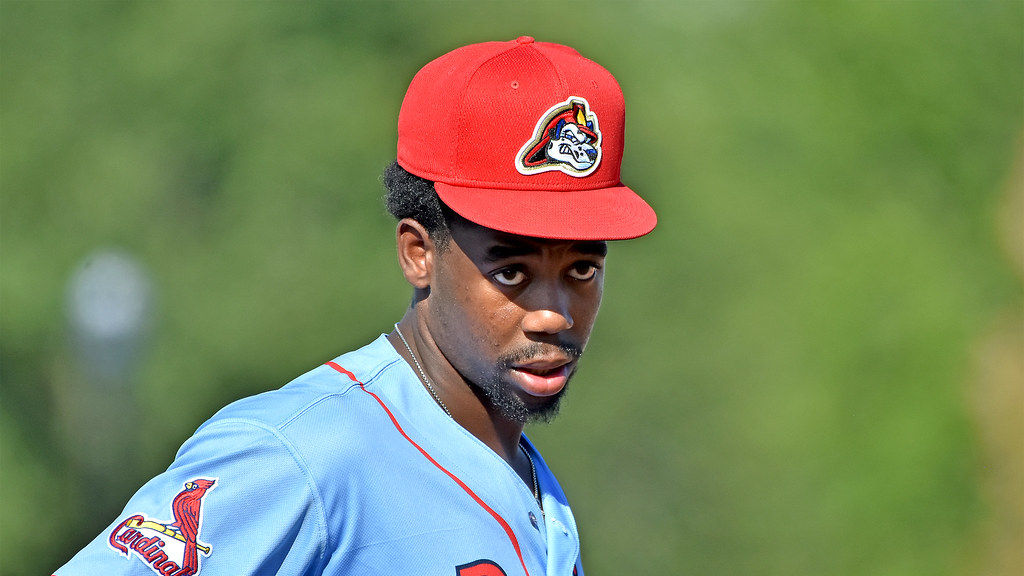
At the start of the season, Walker was promised a full year of at-bats — a crucial opportunity for a player who hadn’t been given a consistent development path since the Cardinals drafted him.
After selecting him, the team moved him from third base to the outfield despite his inexperience there, and then pushed him aggressively through the system the following spring. While he showed some promise, his underlying numbers and launch angle needed refining, leading to frequent trips between the majors and minors.
Despite some rust in the spring, Walker opened the regular season on a high note, posting a five-game hitting streak and batting .389 with a homer and two of the league’s hardest-hit balls by exit velocity.
Early Statcast data highlighted him as a breakout candidate, ranking him among the league leaders in several bat-tracking metrics. This, along with improvements in his plate discipline and defense, gave me hope that Walker, at just 22, was starting to put everything together.
Unfortunately, that hot start didn’t last. Since the beginning of April, Walker has struggled mightily. Over the last seven-game road trip, he went just 1-for-23, and his pitch recognition seems to have regressed to the issues he showed in 2024.
Although his walk rate has improved to 7.4%, it remains low, and both his chase and strikeout rates have worsened to among the league’s worst. He’s managed just three extra-base hits all year, and his OPS is a dismal .533 — with his expected stats showing equally poor results.
Given the Cardinals are in a rebuilding phase rather than contending, there’s less pressure to pull the plug on Walker’s extended audition. Additionally, the minor league system isn’t brimming with outfielders ready to challenge him. The main alternatives — Matt Koperniak, a 27-year-old lefty, and Chase Davis, a former first-round pick who’s performing well at Double-A Springfield — aren’t immediate threats to his playing time.
JoJo Romero
As we discussed with Ryan Fernandez, the Cardinals’ bullpen has been a major weakness this season, so it’s not surprising to see another reliever show up on this list. JoJo Romero, who was the team’s top left-handed reliever last year, has struggled almost as much as Fernandez. However, Romero’s decline was somewhat more expected than the right-hander’s.
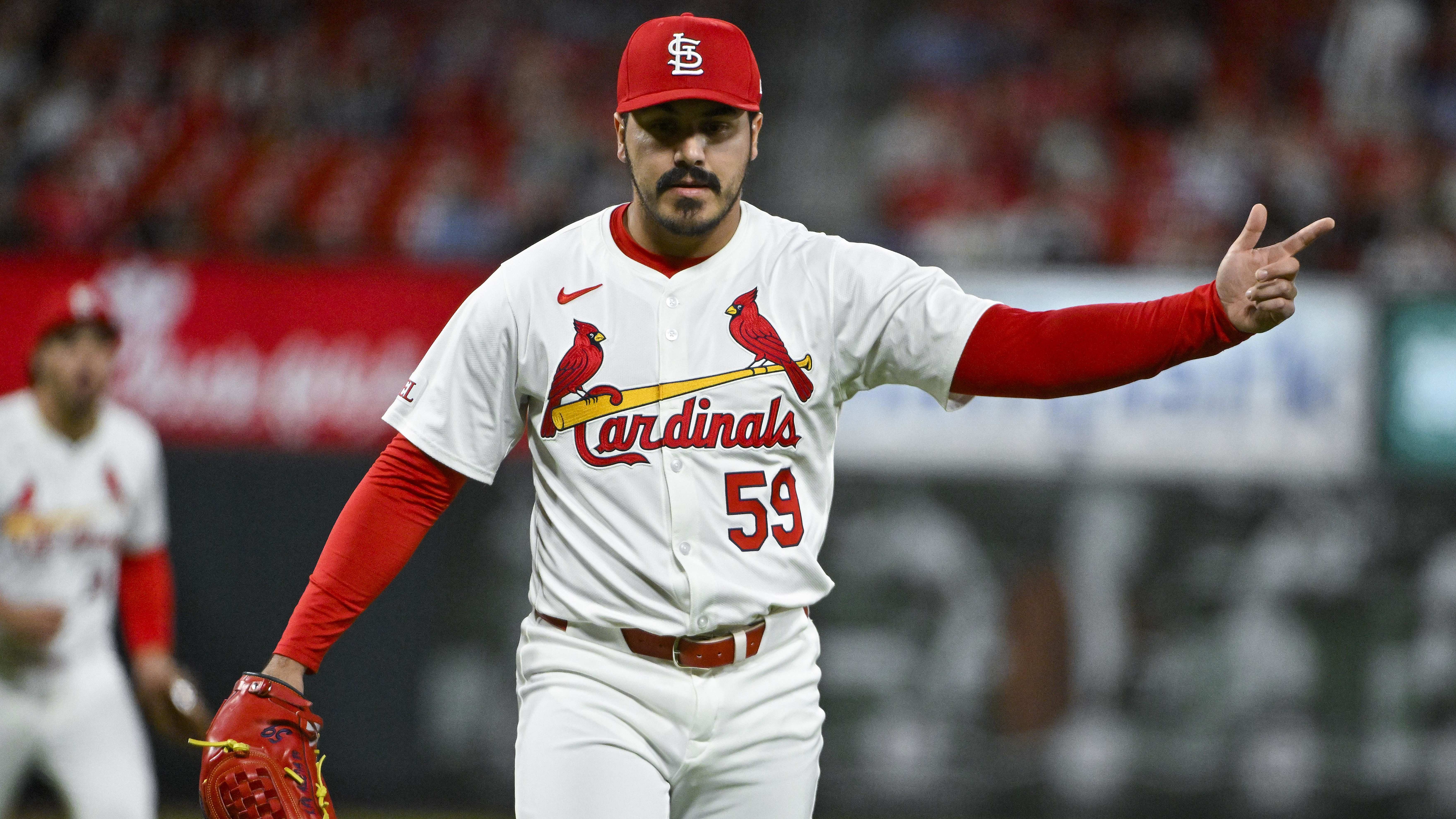
Romero had a career-best season in 2024, with his sinker averaging 94 mph, a personal-high 59 innings pitched, and the lowest walk rate of his career. On the downside, he posted the worst strikeout rate of his career and benefited from a lot of good luck on balls in play — his expected ERA was nearly two runs higher than his actual 3.36 mark.
I flagged these concerns earlier in the offseason, but with the Cardinals’ front office neglecting to reinforce the bullpen, manager Oli Marmol had little choice but to keep using Romero in a high-leverage setup role, especially after Matthew Liberatore transitioned fully into the starting rotation.
Romero’s good fortune ran out quickly once the regular season started, despite a strong, scoreless showing in Spring Training. Like Fernandez, he had a clean first outing before struggling in the following games. In three of his next five appearances, Romero gave up two runs without recording a strikeout.
Although he rebounded with three scoreless outings after that, his command issues resurfaced, issuing three walks over 2.1 innings. His fastball velocity has also dipped by 1.2 mph from 2024, and opponents are hitting .333 against it, while his slider has also lost its sharpness.
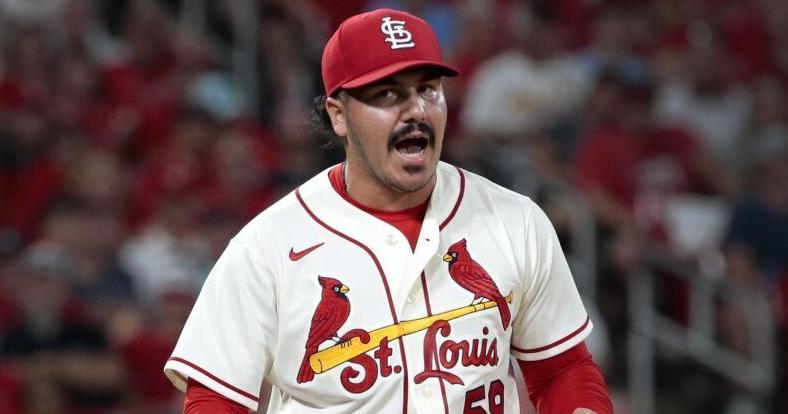
The control problems eventually caught up to him, resulting in losses during his next stretch. Over three appearances, Romero lasted just 1.1 innings, giving up four runs on four hits, a home run, and a walk, inflating his ERA to a rough 7.27 across 8.2 innings.
Despite these struggles, Romero’s role in the bullpen appears safe for now, with Steven Matz bouncing between roles and John King faltering in low-leverage situations. The Triple-A Memphis options are thin, with only two healthy lefties available — neither of whom is on the 40-man roster or has big league experience.
For now, Marmol will likely have to keep using Romero, though he might be better off deploying him earlier in games and in less critical situations until Romero can rebuild some trust.
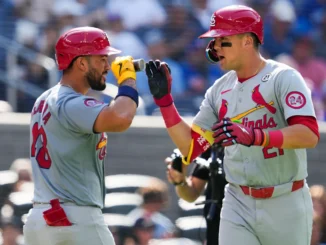
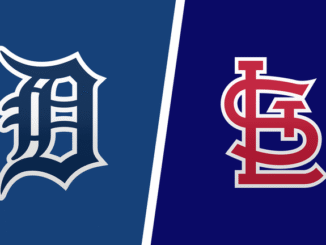
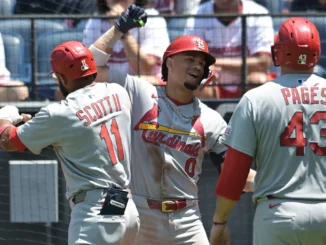
Be the first to comment